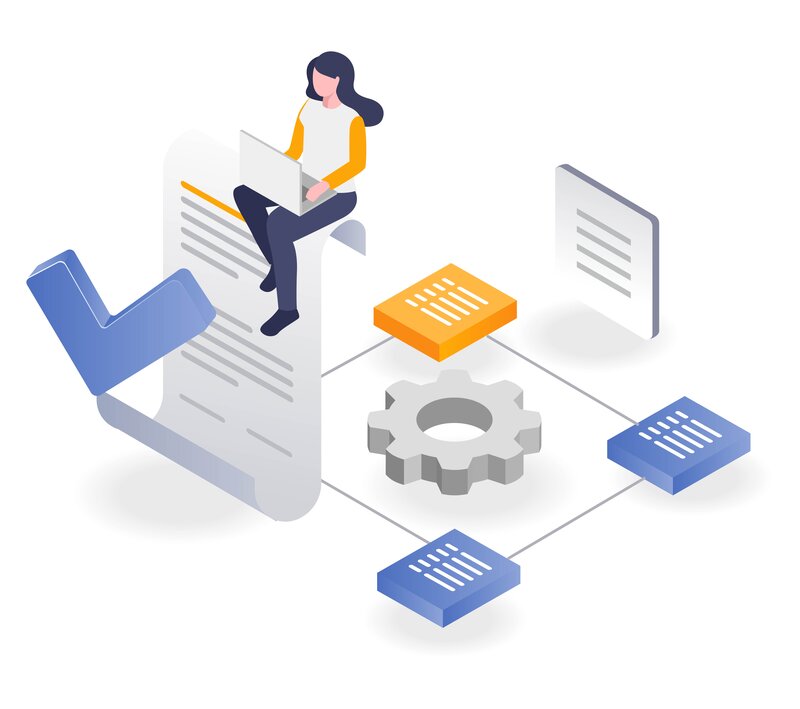Adding AI to your workflow sounds like something you might like to do, and there are plenty of benefits of AI-powered tools. But how do you get started? In this article, we’ll discuss 5 ways AI can help you streamline project management workflows with tips on how to start making changes to the way you work today.

Streamline Workflows with AI
There are plenty of ways AI can help you manage projects more effectively. Workflows are an essential part of any project management process, so that is a good place to start when considering how to add AI power to your working practices.
Let’s define what we mean by workflow before we go any further. A workflow is a set of steps that make up a process. The steps could be tasks, approvals, events (for example, a particular meeting), or other types of interactions that take place between two or more colleagues. Sometimes the steps happen in sequence (e.g. a piece of work is completed and then a manager approves it), other times you may be able to carry out steps in parallel (e.g. someone drafts a document and two colleagues then review it simultaneously).
Regardless of the content of the workflow or the process you are going through, there is normally a set of rules that apply to the steps. For example, only managers can approve budget change requests, or only project managers can assign resources to tasks. The good news for leaders wanting their teams to optimize efficiency is that workflows perfectly lend themselves to automation and AI processing, without much setup on your part.
Below, we’ll look at 5 workflows and simple ways you can tweak what you currently do to take advantage of efficiencies from AI.
1. Risk identification
The risk identification workflow happens most commonly at the start of a project, although risks crop up throughout the delivery and execution phases too, so this is a workflow you’ll repeat at various times throughout the project to make sure all new risks are captured.
You can streamline the process by using AI-powered similarity features to identify risks that might apply to this project. For example, let’s say you previously did some projects for the same client. Nimble, which has AI-powered workflows, can interrogate risk data from past projects and surface any items that might be relevant to the current project, based on contextual elements. As a project manager, you can choose whether the identified risks are appropriate to add to your risk log, and you can edit them as necessary to tailor them specifically for this new project.
This process saves you time because you aren’t brainstorming risks from scratch, and will help you capture everything relevant as you won’t miss items that cropped up on other projects. The auto-complete feature makes it even easier to fill in risk details, making logging risks efficient.
Source: ligsuniversity
2. Schedule creation
Use the AI-powered similarity feature in Nimble to identify use cases or schedule items that can be reused for this project. Again, AI can interrogate past projects to see what tasks are most likely to be appropriate for this project and surface them so you don’t have to create them from scratch.
As the project manager, you can select the tasks you want to bring into your schedule, editing as necessary. You’ll never have to start from a blank schedule template again!
Streamlining your workflow like this also reduces human error related to creating and tracking a schedule. Intelligent schedule tracking features can monitor completion and flag delays to you in real-time.
3. Collecting feedback
43% of project managers wish they could avoid repetitive tasks like chasing people for status updates. Use the AI features of your workflow management tool to do the chasing for you.
AI tools can send out reminders, surveys, and sort through and collate feedback for any workflow that involves customer (internal or external) interaction and feedback.
4. Cost estimation
Budgeting always seems to be a challenge, but the more data you have, the easier it should be. Unfortunately, cost data isn’t always easy to access for other projects. That’s where AI comes in.
Interrogate the PMO data set to understand how and what kind of estimates go over or what contingency is needed. Costs can be pushed through a workflow if the estimates require approval, so you have full transparency and human intervention as required.
5. Resource allocation
Workflows that involve allocating resources can be streamlined when the resource is allocated automatically, based on skills and availability. Complete profiles for each of your resources and then let AI-powered tools sift through available capacity and allocate the right member of the team to the right task based on parameters you can set. Of course, the project manager or team leader can always overrule the AI suggestions if you feel that another colleague would fit better.
Resource allocation is one of the top challenges for project managers, based on the conversations we have with project leaders every day. The more manual effort we can take out of this process, the more time resource managers can spend on other tasks like securing resource, upskilling individuals or forecasting future resource needs.
Generative AI can help you draft emails to line managers requesting resource availability if no resource database is available. Repetitive tasks like timesheet chasing can be automated too: just set alerts and let your AI assistant send out the reminders!
In summary
AI still has a long way to go, and we can expect to see even more tech-powered help for workflows and project management processes in the future. For now, it’s clear that organizations that invest in modern workflow management tools have the advantage when it comes to efficiency without taking away the human aspects of collaboration and teamwork.
Choose a tool that supports your business as you scale and develop AI capabilities. For more about how AI is changing project management, check out our webinar.